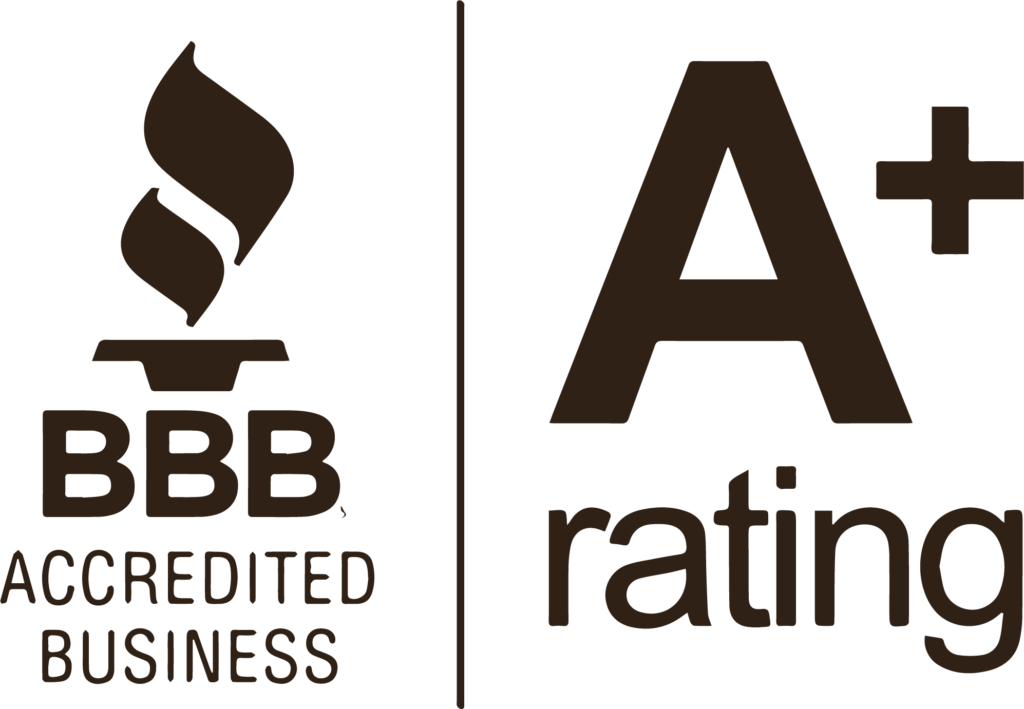Passing down wealth isn’t just about leaving assets – it’s about protecting them for the future. A trust fund offers a structured way to manage and distribute assets while safeguarding them from unnecessary taxes, legal disputes, and financial mismanagement.
What is a trust fund? Put simply, it is a financial arrangement designed to hold, manage, and distribute assets for the benefit of individuals or organizations. Trusts play a significant role in estate planning, asset protection, and wealth transfer strategies, allowing grantors to allocate resources while specifying how and when they should be used. Unlike direct inheritance, trust funds provide structured control over assets, reducing tax burdens, preventing mismanagement, and offering legal protections that benefit both grantors and beneficiaries.
A trust operates through a legally binding agreement involving three key parties: the grantor, trustee, and beneficiary.
- The grantor – also known as the settlor or trustor – establishes the trust and transfers assets into it.
- The trustee – an individual or institution – is responsible for managing the trust according to its terms while acting in the best interests of the beneficiaries.
- Beneficiaries receive financial benefits – either as regular distributions or lump sums – depending on the terms of the trust agreement.
Trust funds also provide flexibility and financial security in estate planning. They allow grantors to outline specific rules for asset distribution, guaranteeing that their wishes are carried out beyond their lifetime. Families with substantial wealth use trusts to reduce estate taxes and shield assets from legal disputes.
For individuals with dependents who cannot manage finances independently, trusts create a structured system of ongoing financial support. Given their adaptability, trusts serve a variety of functions – including personal wealth management, philanthropy, and business succession planning.
Exploring Different Trust Structures
The types of trust funds fall into two main categories: revocable and irrevocable.
A revocable trust – or living trust – allows the grantor to maintain control over assets during their lifetime. The grantor can modify or dissolve the trust as long as they are alive and mentally capable. Revocable trusts provide flexibility and enable seamless asset transfers, bypassing probate. However, since the grantor retains control, the assets remain part of their taxable estate and are accessible to creditors.
An irrevocable trust cannot be modified once established, providing stronger asset protection and tax advantages. By relinquishing control, the grantor effectively removes the assets from their taxable estate. Irrevocable trusts are commonly used to minimize estate tax liability, protect assets from legal judgments, or provide financial security for beneficiaries with special needs. Due to their permanence, irrevocable trusts require careful planning.
Charitable Trusts: A Legacy of Giving
One specialized form of an irrevocable trust is a charitable trust, which allows individuals to contribute assets for philanthropic purposes while benefiting from tax advantages. These trusts help fund nonprofits, educational institutions, and community initiatives, providing a structured way to give back. The two primary types are:
- Charitable remainder trust (CRT) – provides income to the grantor or other beneficiaries for a set period before transferring the remaining assets to a designated charity.
- Charitable lead trust (CLT) – works in reverse, providing financial support to a charity for a specified term before passing the remaining assets to non-charitable beneficiaries.
Both options offer tax benefits while providing long-term financial support for meaningful causes. Charitable trusts create a lasting impact, preserving wealth for both philanthropy and future generations.
Specialized Trust Funds
Specialized trusts serve distinct purposes beyond standard estate planning, addressing specific financial and legal concerns. Some trusts cater to specific needs – such as supporting individuals with disabilities – controlling asset distribution through a will or preserving family wealth.
A special needs trust is designed for individuals with disabilities, allowing them to receive financial assistance without disqualifying them from government benefits like Medicaid or Supplemental Security Income. These trusts provide ongoing support while complying with regulations that protect access to public assistance programs.
A testamentary trust is established through a will and becomes effective after the grantor’s passing. It allows for controlled distribution of assets to minor children or dependents who may not be financially responsible. Testamentary trusts help prevent mismanagement while promoting long-term financial stability.
A credit shelter trust – or bypass trust – is a popular tool for married couples to minimize estate taxes. When one spouse passes away, part of the estate is placed into the trust instead of being inherited outright. The surviving spouse may access income from the trust while preserving the principal for future heirs, preventing double taxation.
For individuals looking to transfer real estate in a tax-efficient manner, a qualified personal residence trust (QPRT) offers a strategic solution. This trust allows the grantor to place a primary or secondary residence into the trust while continuing to live in it for a designated period. Once the term ends, ownership transfers to beneficiaries at a reduced taxable value, lowering potential estate tax liabilities.
Trust Funds for Asset Protection and Wealth Transfer
For individuals and families looking to safeguard wealth and create structured methods of transferring it through generations, a variety of trusts exist to meet different estate planning goals.
Dynasty trusts are structured to last multiple generations, shielding family wealth from lawsuits, divorces, and taxation over time. These trusts often hold valuable assets like real estate, investment portfolios, and business interests, fostering long-term financial growth while benefiting future heirs. Unlike standard inheritance – which may be heavily taxed – a dynasty trust strategically reduces tax liabilities across generations, making it a preferred tool for high-net-worth families.
Generation-skipping trusts work similarly but provide a specific tax advantage – assets in the trust are transferred directly to grandchildren or later generations, bypassing the grantor’s children to avoid estate tax at each generational level.
A spendthrift trust is designed to protect beneficiaries from financial irresponsibility. In this structure, the trustee maintains control over distributions, preventing beneficiaries from accessing funds directly. This family trust shields assets from creditors, legal judgments, or reckless spending, making it particularly useful for families with beneficiaries prone to poor financial decisions, addiction, or unstable personal circumstances.
Other asset protection trusts cater to specific needs.
- A blind trust restricts beneficiaries from knowing or controlling trust assets, commonly used in politics and corporate settings to prevent conflicts of interest.
- An insurance trust holds life insurance policies outside of an estate, providing liquidity for taxes and expenses while preserving wealth for heirs.
- A marital trust provides financial security for a surviving spouse while preserving the principal for future heirs.
Trust Fund Management and Legalities
Managing a revocable living trust fund requires careful legal, financial, and administrative oversight to maintain its intended purpose while complying with tax laws and fiduciary obligations. Trust management is a complex process that requires trustees to make informed decisions about asset distribution, investments, record-keeping, and beneficiary relations.
One of the primary legal considerations in trust management is taxation. Different types of trusts carry different tax implications, which can significantly impact estate planning strategies. For example, revocable trusts do not offer tax benefits because the assets remain part of the grantor’s estate.
Irrevocable trusts – on the other hand – may provide tax advantages by removing assets from the grantor’s taxable estate. This structure can lower estate tax liabilities and protect assets from creditors, but it also means that the grantor relinquishes direct control over the trust’s contents. Trustees must be aware of income tax on trust earnings, potential capital gains taxes, and the requirements for filing trust tax returns.
Trustees play a crucial role in trust management, and their responsibilities extend beyond simply distributing funds to beneficiaries. They must oversee investments, manage trust expenses, and maintain detailed financial records. Many trusts are designed to grow in value over time, meaning trustees must develop sound investment strategies that balance risk and return. Depending on the trust’s terms, the trustee may be responsible for allocating funds to beneficiaries, managing real estate properties, or overseeing compliance with financial reporting requirements.
Legal compliance is another critical aspect of trust management. Trustees must act in the best interests of beneficiaries, adhere to the terms outlined in the trust agreement, and remain transparent in their financial dealings. Failure to fulfill fiduciary duties can lead to legal disputes, financial penalties, and even removal from their role. Given these responsibilities, many trustees seek the assistance of legal and financial advisors to help navigate the complexities of trust administration.
A well-managed trust fund not only protects assets but also preserves the legacy of the grantor by adhering to their long-term financial vision. Trustees who approach their role with diligence and professionalism help maintain the trust’s integrity and provide financial security for generations to come.
Beneficiary Rights and Trustee Liabilities
Beneficiaries of a trust fund have specific rights that protect their financial interests and provide recourse in the event of mismanagement. While the terms of a trust dictate how and when assets are distributed, beneficiaries are entitled to certain legal protections to prevent misuse of trust assets by the trustee.
One of the fundamental rights of a beneficiary is access to trust information. Beneficiaries are entitled to request financial statements, distribution records, and other relevant documents to assess the management of trust assets. If they suspect misconduct or mismanagement, they have the right to challenge the trustee’s decisions in court. This legal oversight prevents trustees from acting against the interests of the beneficiaries.
Trustees – in turn – carry significant legal liabilities. If they fail to act in the best interests of the beneficiaries, engage in self-dealing, or mismanage trust assets, they can face legal consequences. Trustees must maintain accurate records, follow distribution guidelines, and communicate openly with beneficiaries to prevent disputes. Seeking professional guidance can help trustees mitigate risks and navigate their responsibilities more effectively.
Advanced Trust Fund Strategies
A well-structured irrevocable or revocable trust fund does more than just safeguard assets – it provides strategic financial benefits, tax efficiency, and structured distributions for beneficiaries. Advanced estate planning techniques can help grantors and trustees optimize wealth preservation, minimize tax liabilities, and protect assets from potential risks.
Investment Planning for Trust Funds
A well-managed trust relies on a strategic investment approach to preserve and grow assets for future beneficiaries. Trustees must balance risk and return while aligning investments with the trust’s long-term objectives. Diversifying across asset classes – such as stocks, bonds, real estate, and private equity – helps mitigate market fluctuations and maintain financial stability. Many trustees work with financial advisors to develop strategies that emphasize both capital appreciation and income generation.
To sustain cash flow, trusts often invest in income-generating assets like dividend-paying stocks, municipal bonds, or real estate investment trusts (REITs). These investments provide steady distributions while allowing the principal to grow. For long-term trusts, sustainable investment strategies – such as index funds or conservative growth portfolios – help maintain asset longevity across multiple generations.
Leveraging Annuity Trusts for Tax-Efficient Transfers
For high-net-worth individuals looking to pass on wealth while reducing estate taxes, a grantor retained annuity trust (GRAT)offers a strategic solution. A GRAT allows a grantor to transfer appreciating assets into the trust while receiving fixed annuity payments for a set term. If the assets outperform expectations, any remaining value passes to beneficiaries with minimal tax consequences. A grantor trust can be particularly useful for individuals holding rapidly appreciating stocks or real estate.
Another annuity-based trust structure is the charitable remainder annuity trust (CRAT), which allows the grantor to donate assets while receiving an annuity payment for life or a predetermined period. Afterward, the remaining assets are donated to a chosen charity, providing both philanthropic benefits and tax advantages.
Bypass and Credit Shelter Trusts for Estate Tax Reduction
Bypass trusts – also known as credit shelter trusts – are commonly used by married couples to minimize estate taxes. Upon the death of the first spouse, a portion of the estate is placed in the trust rather than passing directly to the surviving spouse. This allows assets to bypass estate taxation upon the second spouse’s passing, preserving wealth for heirs. The surviving spouse may still access income from the trust, but since they do not hold direct ownership, the assets are not included in their taxable estate.
This structure is particularly effective in maximizing the use of federal estate tax exemptions and is commonly used alongside other estate planning tools to facilitate tax-efficient wealth transfers.
Foreign Asset Protection Trust for Risk Mitigation
For individuals in high-liability professions – such as doctors, business owners, or executives –foreign asset protection trusts (FAPTs) offer a way to shield wealth from potential lawsuits or creditor claims. Established in jurisdictions with strong asset protection laws, these trusts create a legal barrier that makes it significantly more difficult for creditors to seize assets.
FAPTs are particularly useful for individuals concerned about litigation risks and can be combined with domestic asset protection strategies for enhanced security. However, establishing a foreign trust requires careful legal planning to comply with both U.S. and international tax regulations.
Trust Decanting: Modifying an Existing Trust Without Court Approval
Over time, the terms of a trust may need adjustments due to changes in tax laws, family circumstances, or financial needs. Trust decanting is an advanced technique that allows trustees to transfer assets from an existing trust into a new trust with updated terms. This process provides greater flexibility while maintaining the original intent of the grantor.
For example, if a trust was originally structured with rigid distribution rules that no longer serve the best interests of the beneficiaries, decanting allows for modifications without the need for court intervention. It is a powerful tool for trustees managing long-term trusts who must adapt to evolving legal and financial landscapes.
Structuring Incentive-Based Distributions
Rather than providing unrestricted access to trust assets, many grantors choose to implement incentive-based distributions that encourage beneficiaries to meet specific goals before receiving funds. Common conditions include:
- Completing higher education or vocational training
- Maintaining stable employment or engaging in entrepreneurship
- Demonstrating financial responsibility (e.g., avoiding excessive debt)
- Contributing to charitable causes or community service
By incorporating these guidelines, trusts help beneficiaries develop responsible financial habits while still providing financial support.
Irrevocable Life Insurance Trusts (ILITs) for Estate Liquidity
An irrevocable life insurance trust (ILIT) is a specialized trust designed to hold life insurance policies outside of the grantor’s taxable estate. Upon the grantor’s death, the policy proceeds are distributed according to the trust’s terms, providing liquidity to cover estate taxes, debts, or other financial obligations.
Since ILITs remove life insurance payouts from the taxable estate, they maximize the wealth passed down to beneficiaries. This strategy is especially valuable for high-net-worth individuals who want to prevent life insurance proceeds from being subject to estate taxation.
By integrating advanced trust strategies, grantors can structure their estate plans to provide long-term financial security while optimizing tax benefits. Whether leveraging investment strategies, structuring annuity trusts, or utilizing asset protection tools, these techniques allow trusts to function as dynamic wealth management solutions.
Maximizing the Benefits of Trust Funds in Estate Planning
Trust funds are powerful tools for asset protection, financial security, and long-term estate planning. Selecting the right type of trust allows individuals to align their plans with specific financial goals, from safeguarding wealth against creditors and reducing tax burdens to providing long-term care for loved ones.
Effective trust management involves working with legal and financial professionals to create well-structured documents, develop tax-efficient strategies, and appoint trustees who will uphold the grantor’s intentions. A carefully planned trust not only preserves wealth but also creates lasting financial stability for beneficiaries.
No matter if the goal is personal wealth management, philanthropic giving, or business succession, trust funds provide adaptable solutions that leave a meaningful legacy.





